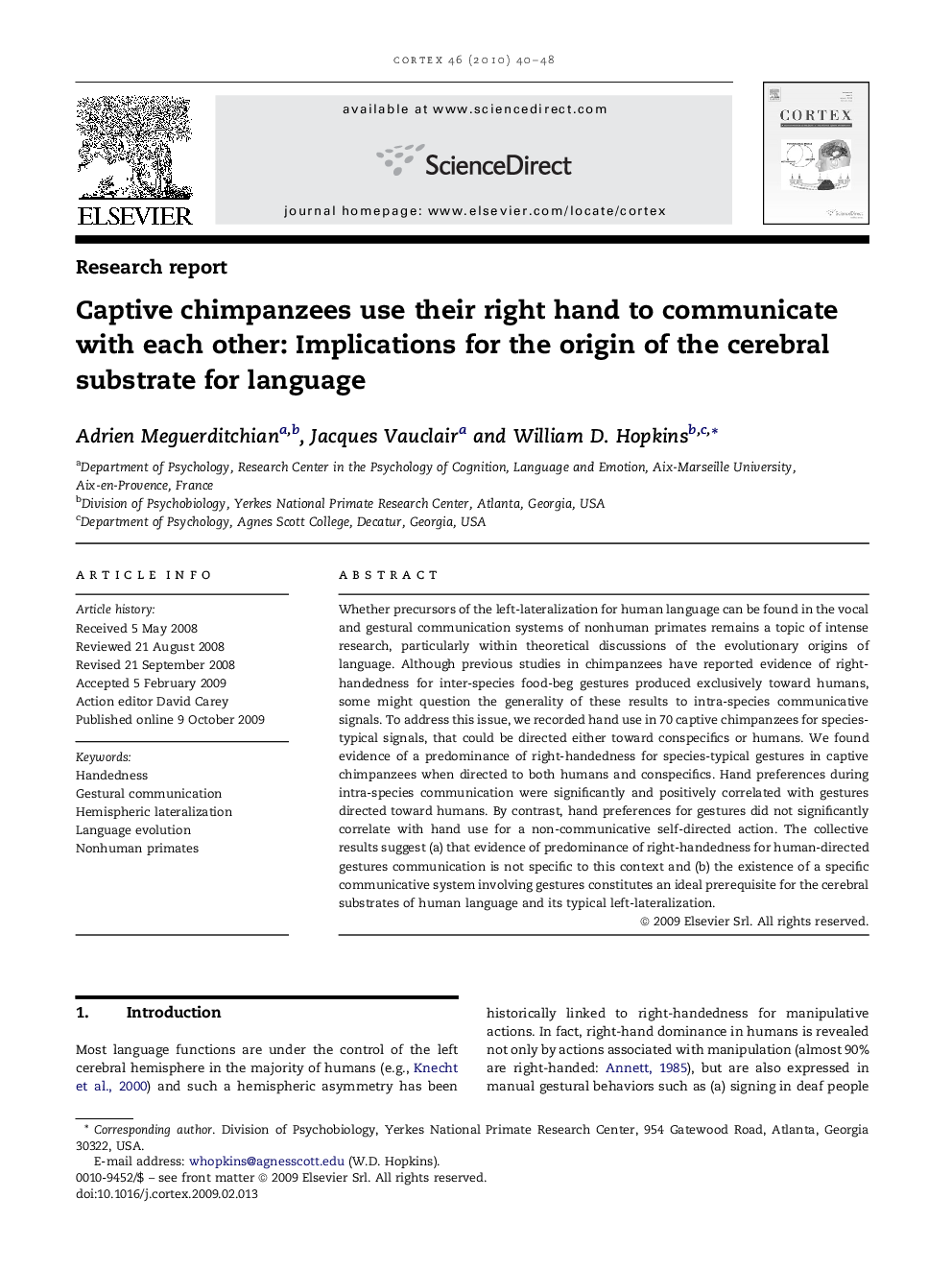| Article ID | Journal | Published Year | Pages | File Type |
|---|---|---|---|---|
| 942380 | Cortex | 2010 | 9 Pages |
Whether precursors of the left-lateralization for human language can be found in the vocal and gestural communication systems of nonhuman primates remains a topic of intense research, particularly within theoretical discussions of the evolutionary origins of language. Although previous studies in chimpanzees have reported evidence of right-handedness for inter-species food-beg gestures produced exclusively toward humans, some might question the generality of these results to intra-species communicative signals. To address this issue, we recorded hand use in 70 captive chimpanzees for species-typical signals, that could be directed either toward conspecifics or humans. We found evidence of a predominance of right-handedness for species-typical gestures in captive chimpanzees when directed to both humans and conspecifics. Hand preferences during intra-species communication were significantly and positively correlated with gestures directed toward humans. By contrast, hand preferences for gestures did not significantly correlate with hand use for a non-communicative self-directed action. The collective results suggest (a) that evidence of predominance of right-handedness for human-directed gestures communication is not specific to this context and (b) the existence of a specific communicative system involving gestures constitutes an ideal prerequisite for the cerebral substrates of human language and its typical left-lateralization.
